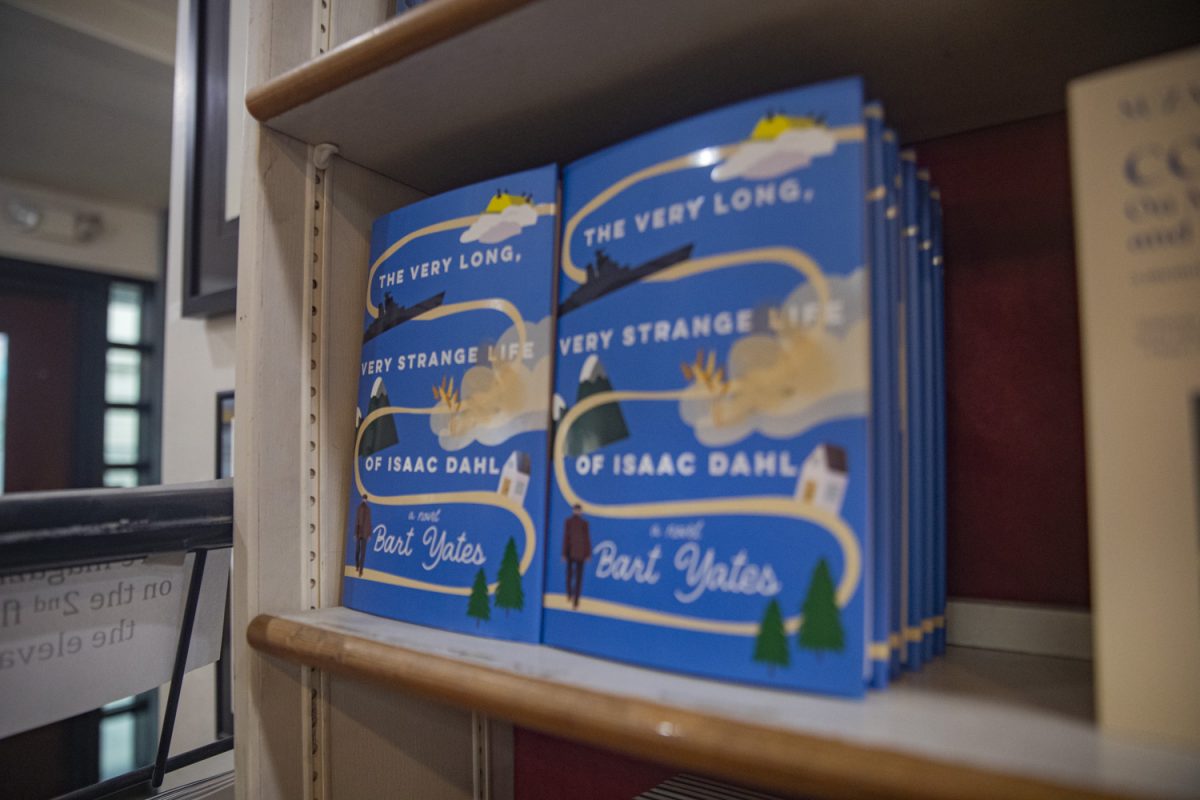Most Iowans — this writer included — might not have been aware that what is thought to be the world’s oldest operating movie theaters can be found just 20 minutes outside of Iowa City in Washington, Iowa.
The State Theater — or the Graham Opera House, as it used to be called — owes much of its current fame to the work of American film pioneer and native Iowan W. Frank Brinton, whose legendary road shows helped to educate rural Iowa on the wonders of cinema in the early 1900s.
On May 1 and 2 at the State Theater — located directly across the street from the iconic Blair House — a freshly discovered and newly restored assortment of films from W. Frank Brinton’s personal collection will be screened for the first time in more than 100 years.
The films, each hand-colored between 1900 and 1908, were restored through collaboration with the University of Iowa Libraries, the Washington County Riverboat Foundation, and the Library of Congress. They will be screened at a variety show event hosted by noted historian Michael Zahs and feature a diverse array of performers including Red Cedar Chamber Music and famed film scholar Rick Altman, who will lead a sing-along.
The Daily Iowan spoke to Altman, a University of Iowa professor emeritus and world-renowned film scholar, via email about the Frank Brinton collection and its significance in film history.
Daily Iowan: Can you talk generally about Frank Brinton and the significance of the collection and—more specifically—about this new crop of material that was found and subsequently restored?
Rick Altman: Frank Brinton was a turn-of-the-century showman. During the late 19th and early 20th centuries he earned his living by putting on shows of all sorts. While many of the individual items in the collection may be found in other locations we have precious few collections that tell the full story of a successful showman. The Brinton collection includes projectors (both lantern slide and film), lantern slides of many sorts (traditional American history, religious slides, illustrated songs, etc.), a wide range of films, programs, tickets, financial documents, and much more. Together, these documents help us to understand just how a traveling exhibitor went about building and performing his shows.
DI: From your standpoint as a scholar and theorist, what significance does the collection have (or rather, do you think will have) within the academy?
Altman: Added to the University of Iowa’s already quite extraordinary collections pertaining to late 19th and early 20th century entertainment (Chautauqua papers, Keith/Albee vaudeville collection, etc.), the Brinton collection will help us understand more completely the day-to-day operations of an independent exhibitor over a substantial period of time.
DI: Can you tell me a little bit about this sing-along that you’re going to be leading at the event? It sounds like a blast and I’m eager to hear about how it came to fruition.
Altman: Most people (including film scholars) have assumed that early film theaters (including the so-called nickelodeon storefront theaters) showed nothing but films. The Brinton collection reinforces the notion that early “film” theaters showed much more than just films. In particular, virtually all early 20th century theaters projected song slides as part of the entertainment. Audiences would see a series of lantern slides, illustrating each line of a popular song, and then would sing along with the chorus. Illustrated songs were only one of the ways that early film audiences were encouraged to participate – loudly – in the program.
While the supporting cast is certainly impressive, there is no doubt whether the films themselves will be the center of attention. The films, which up until their recent discovery had been thought to be lost, will be screened on the only apparatus they can be: an authentic 35-mm projector that, to the delight of any true cinephile, must be cranked by hand.
To further add to the experience, the Blair House is going to be remodeled to resemble the oyster bar that sat across the street from the Graham Opera House more than a century ago. The bar will open Sunday afternoon for an exclusive reception for VIP ticketholders.
Because of the historical significance of the event, prospective attendees should be aware that a film crew will be at the event shooting footage for a future documentary on Brinton and his outstanding legacy.
Tickets are $15 for adults and $5 for children (with a $40 VIP ticket available as well) and can be purchased at the box office or at FilmScene, 118 E. Washington St. They are also available online at www.brintonfilm.com.










